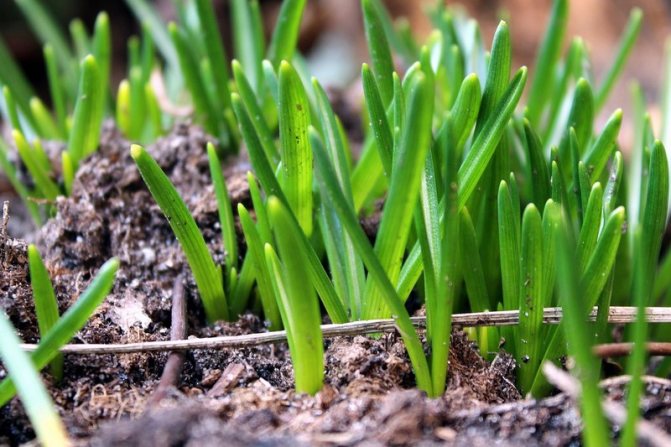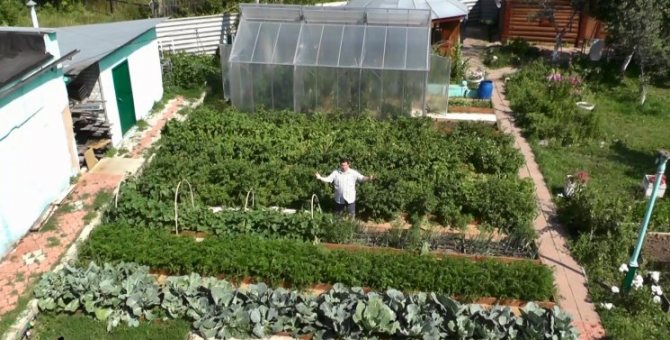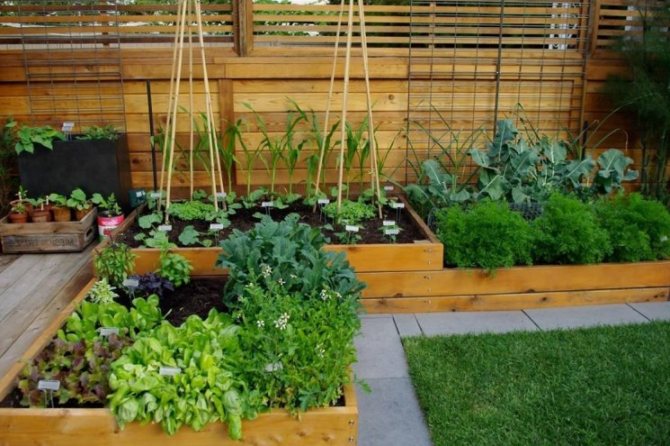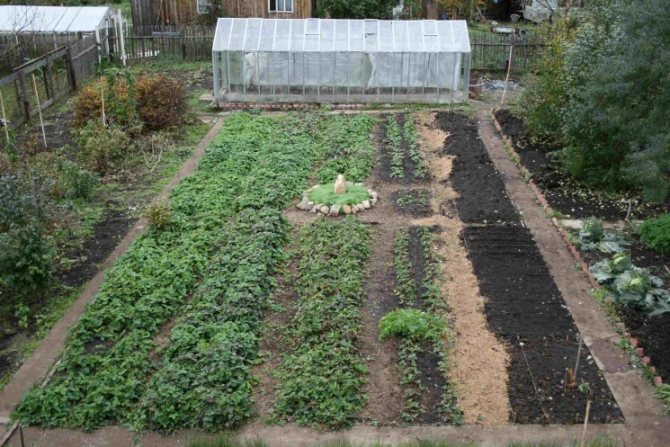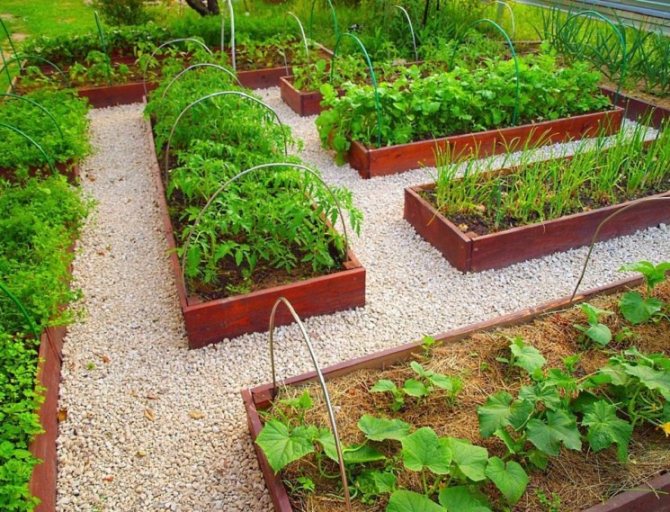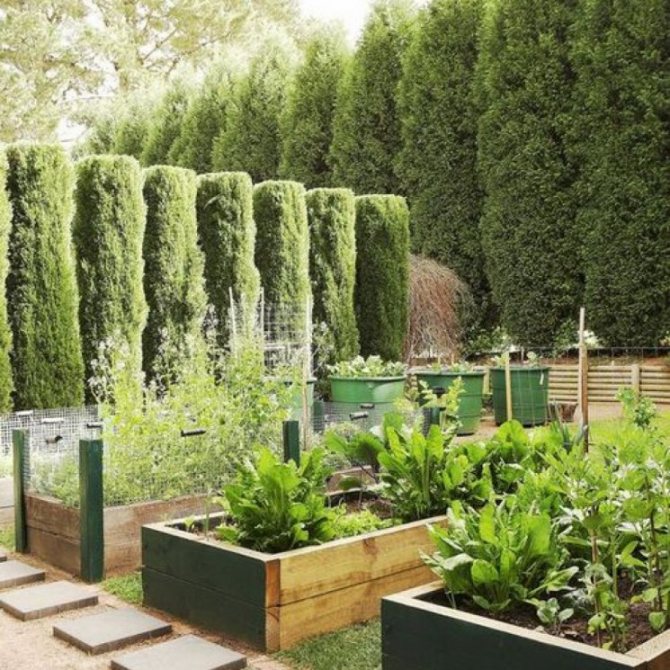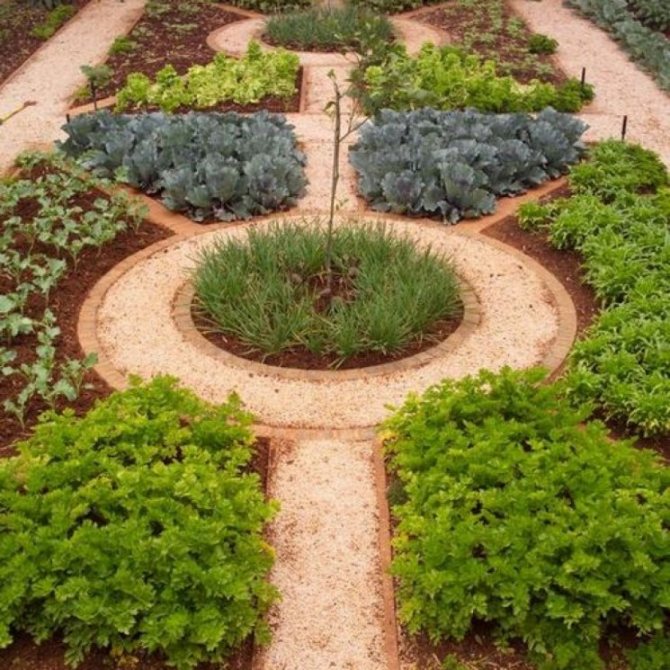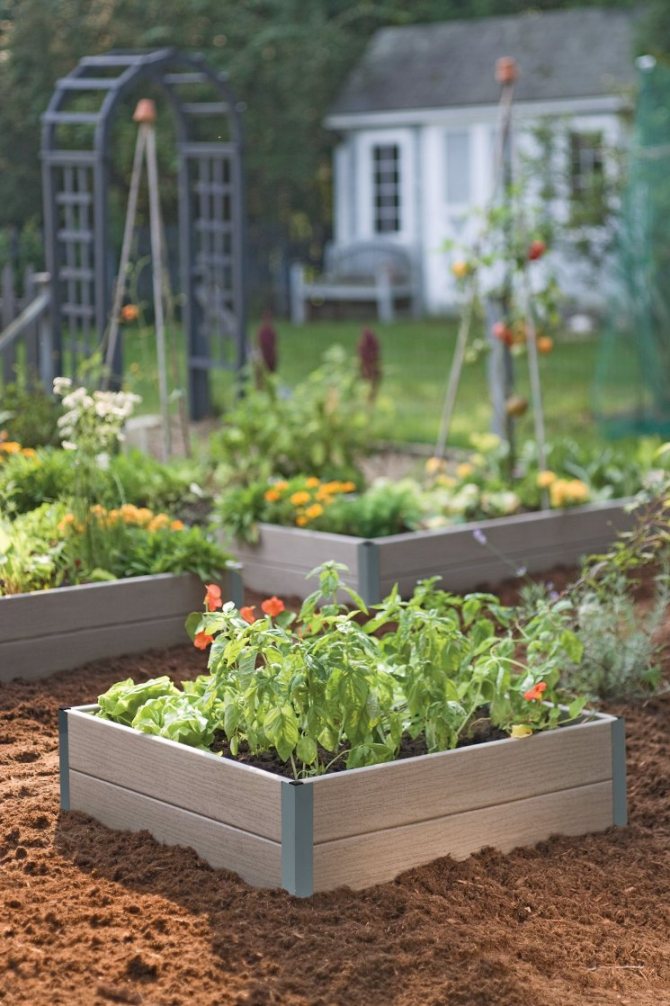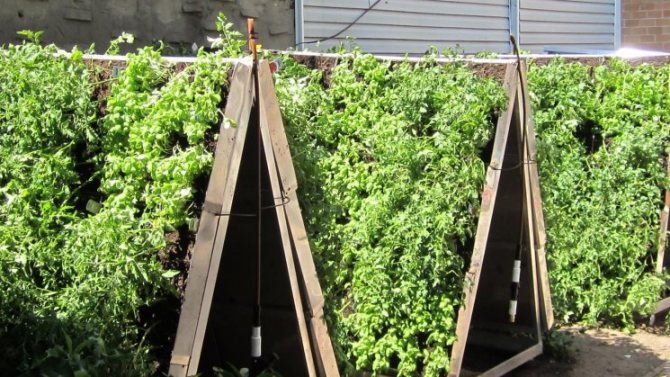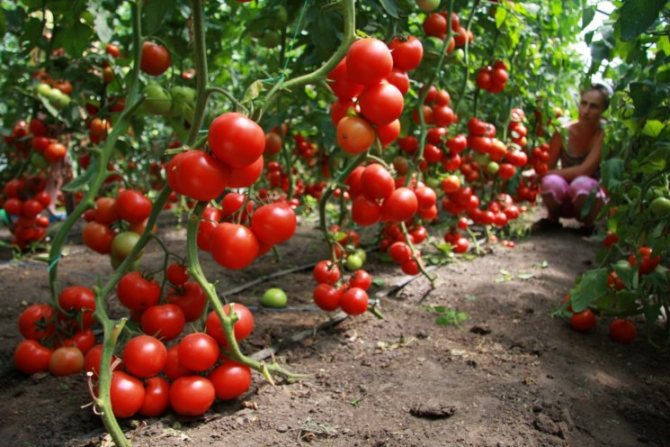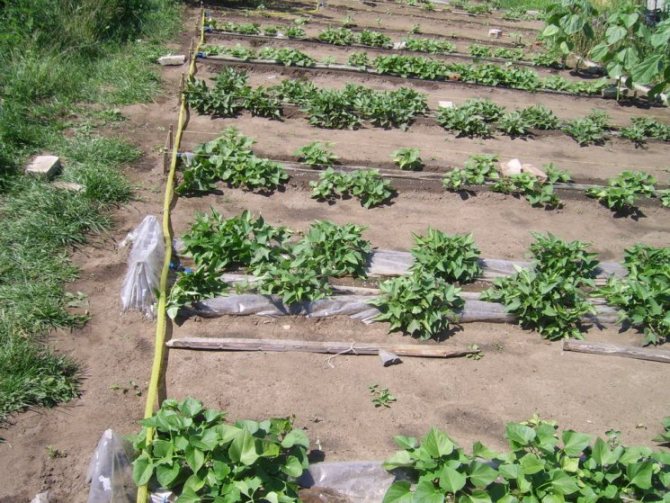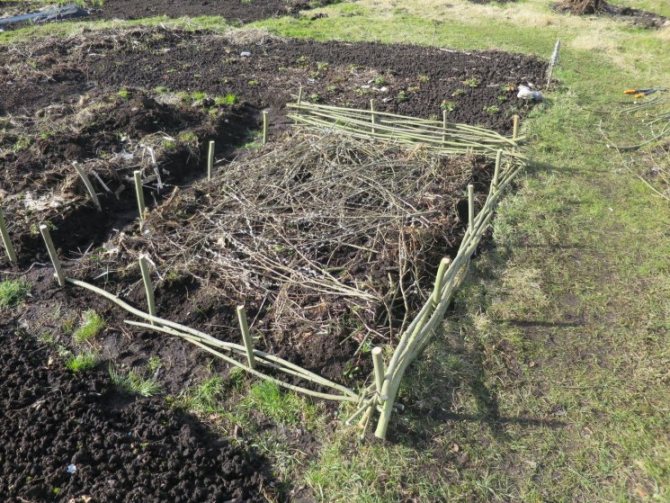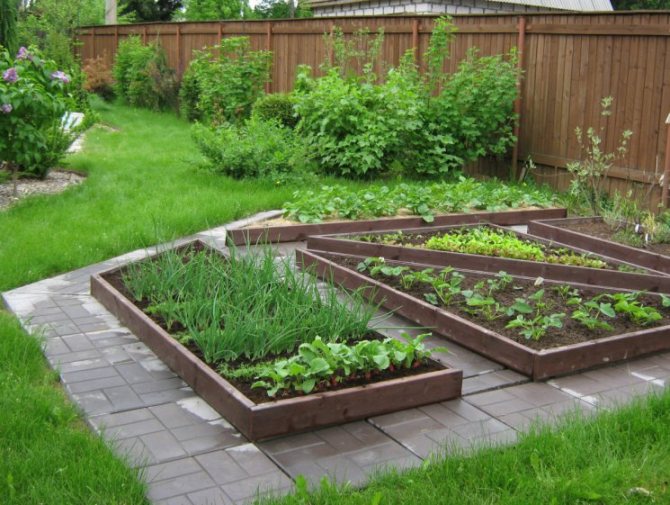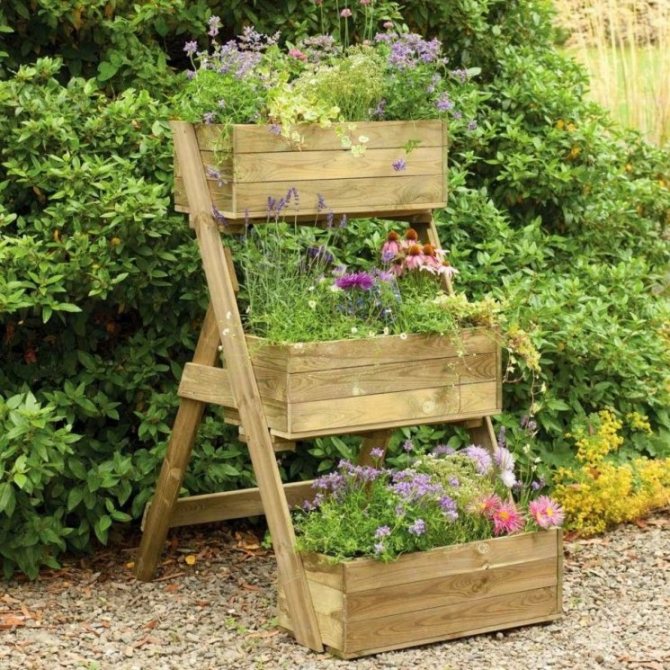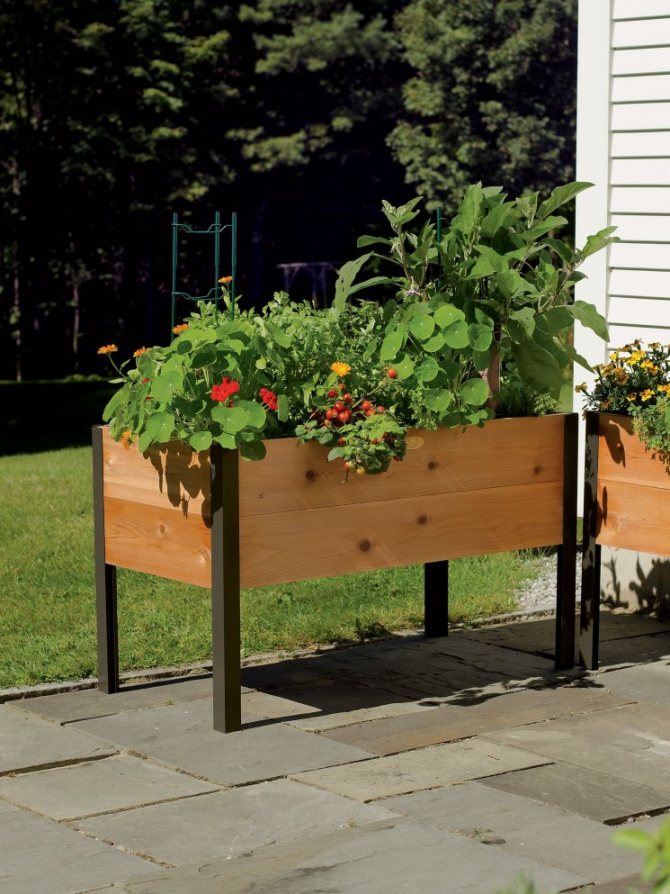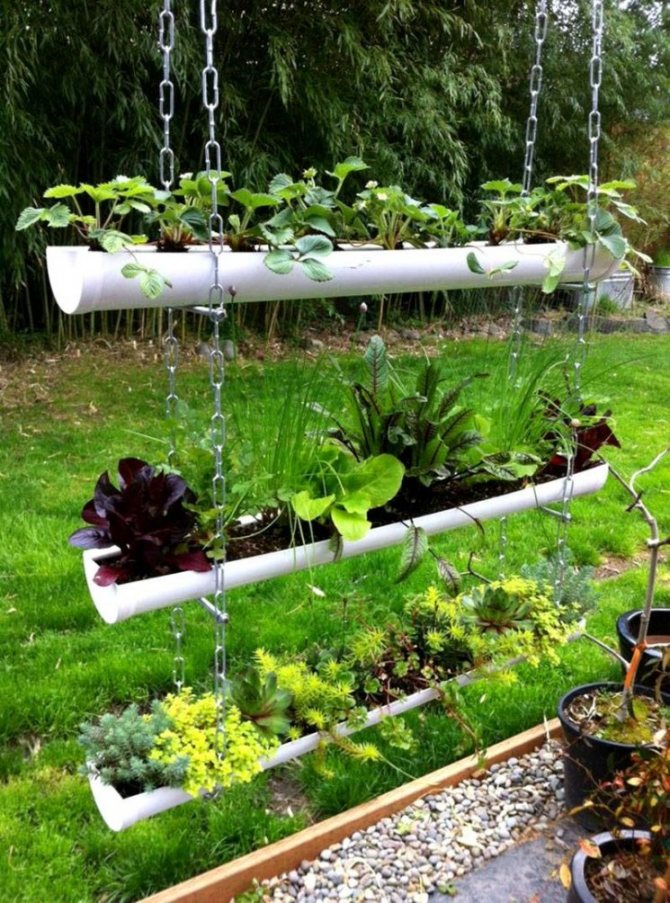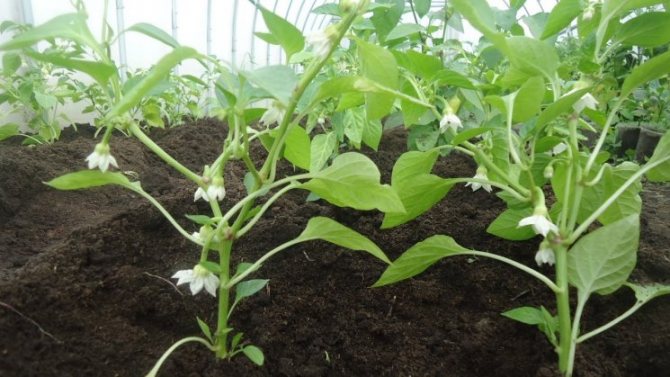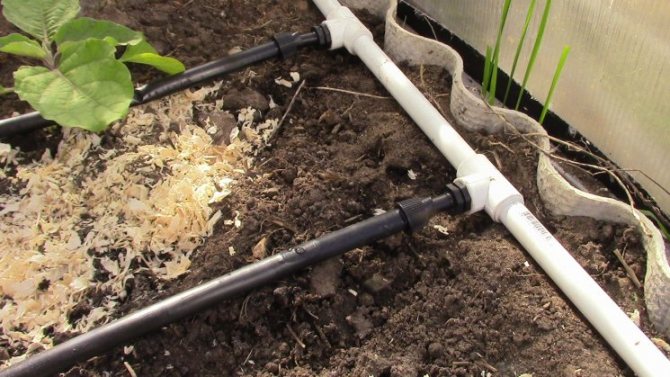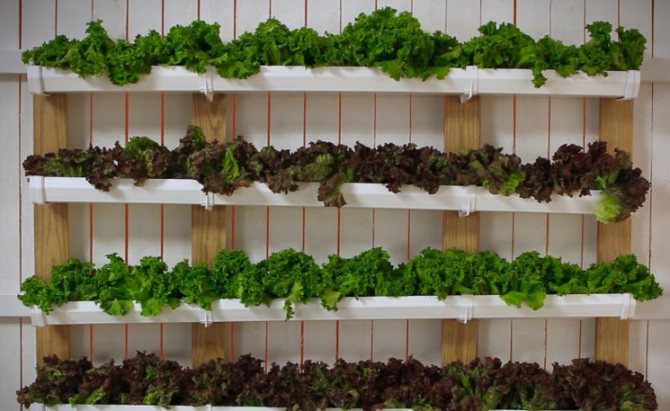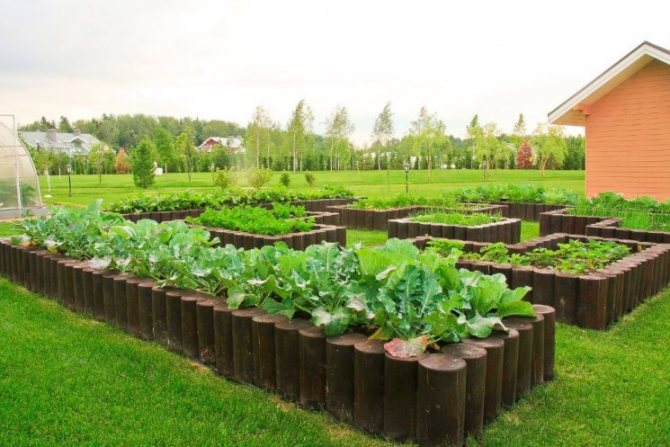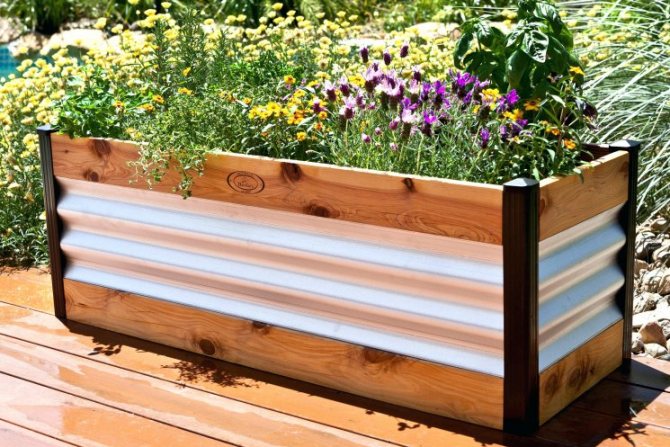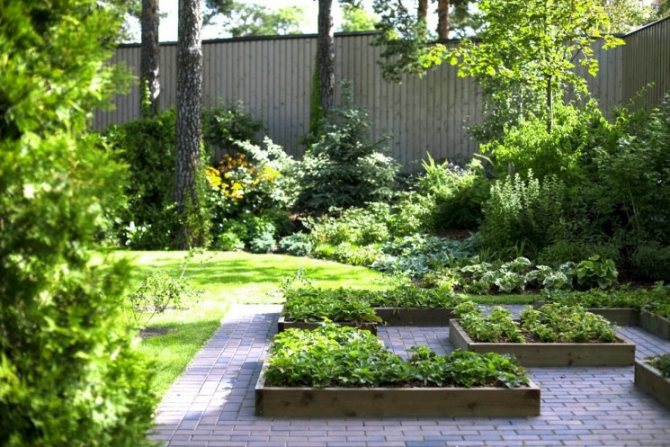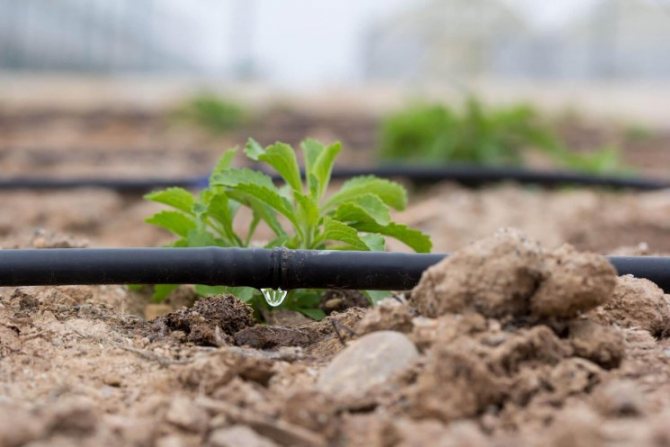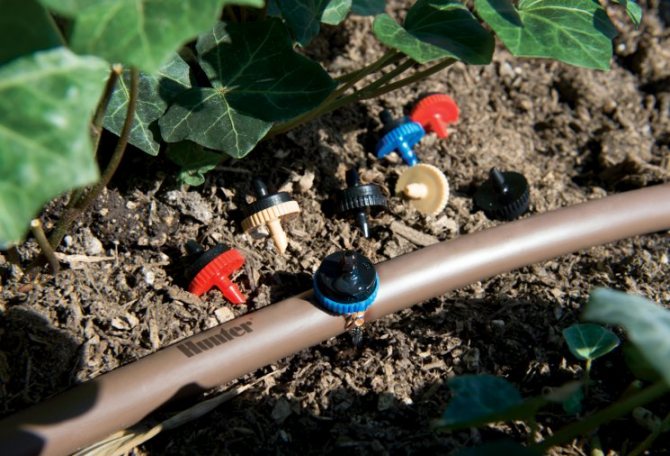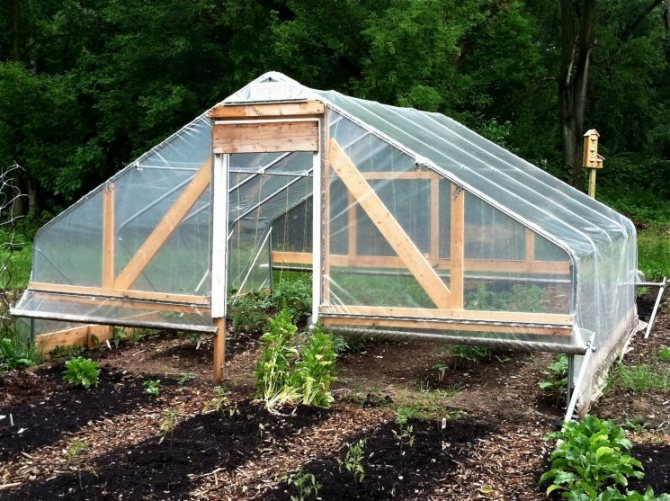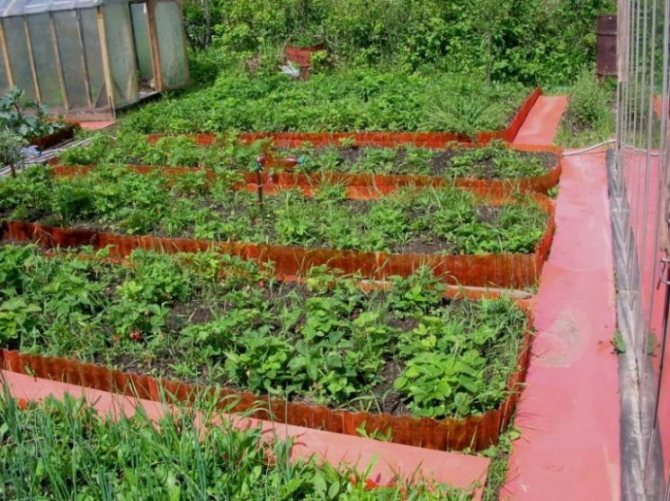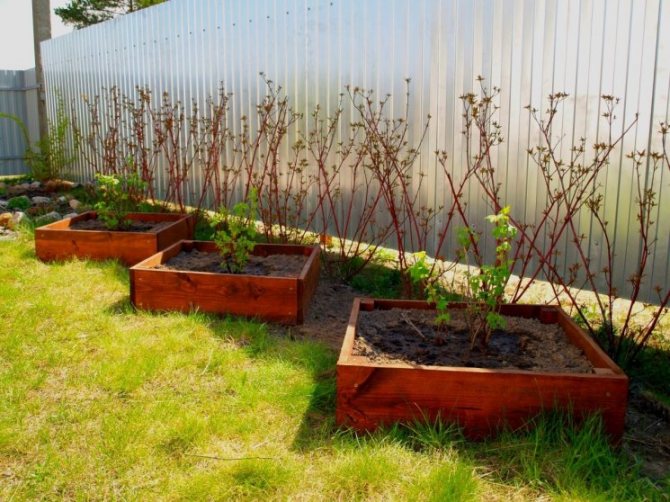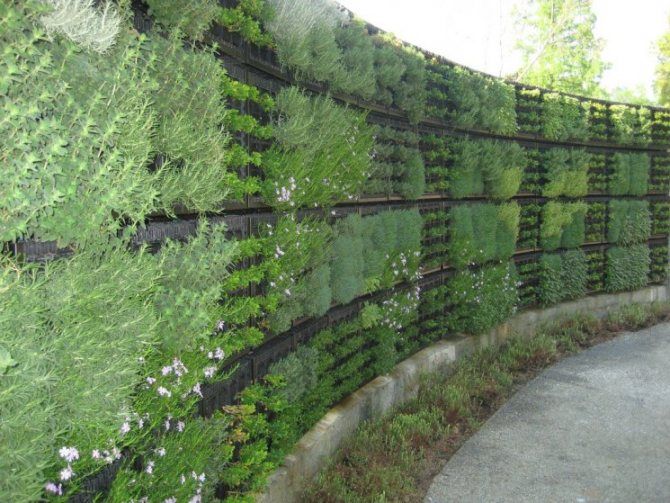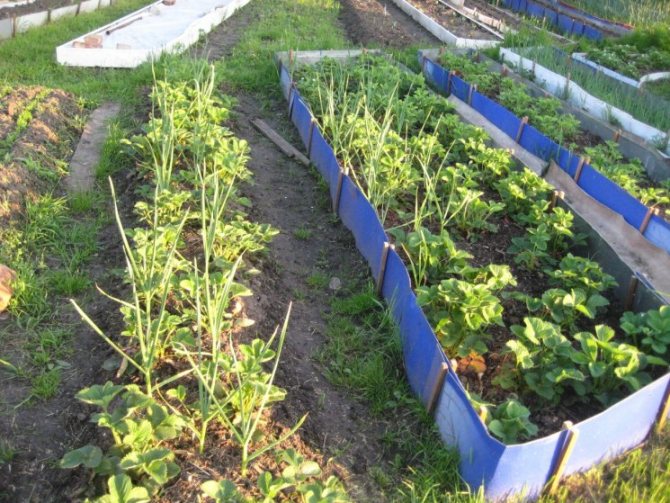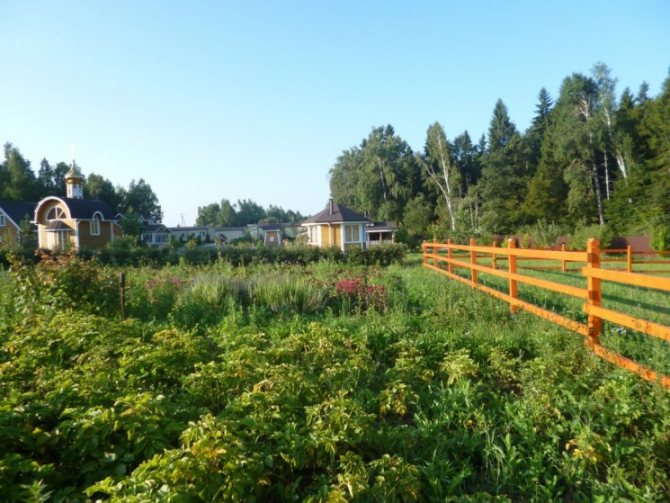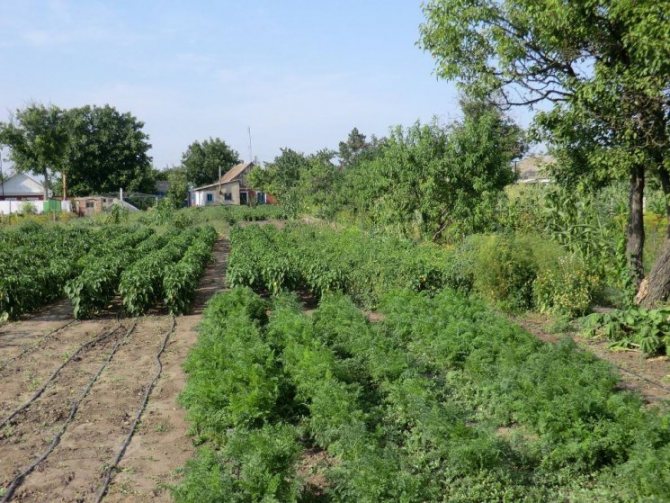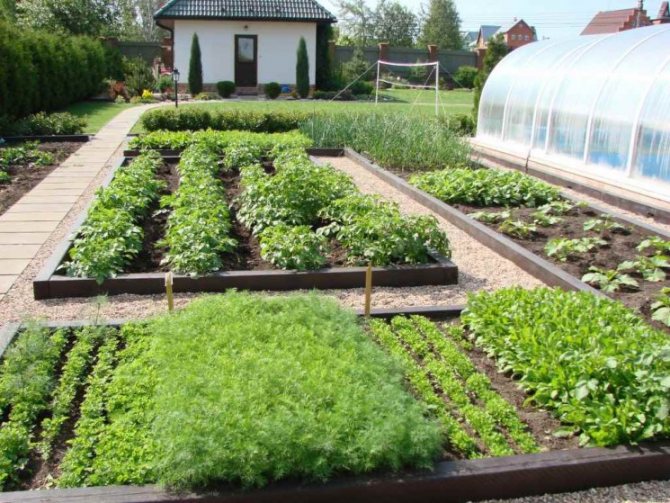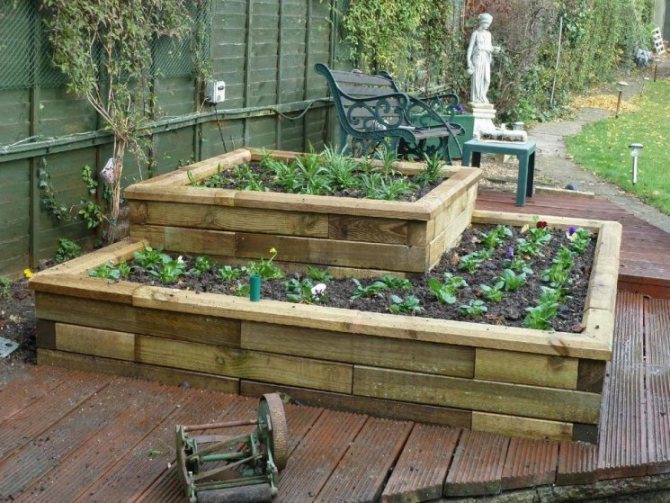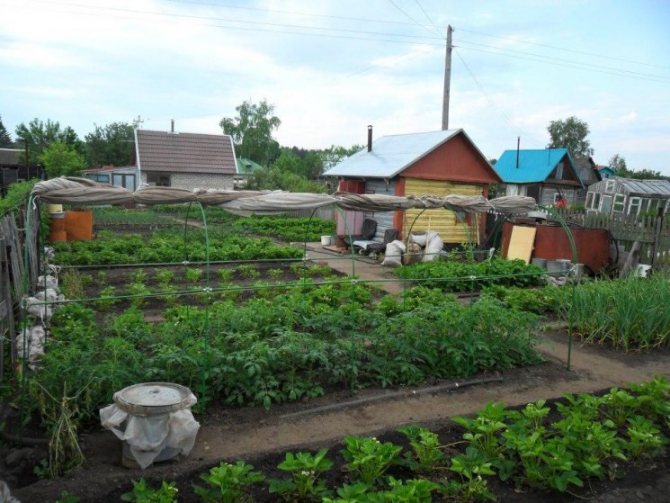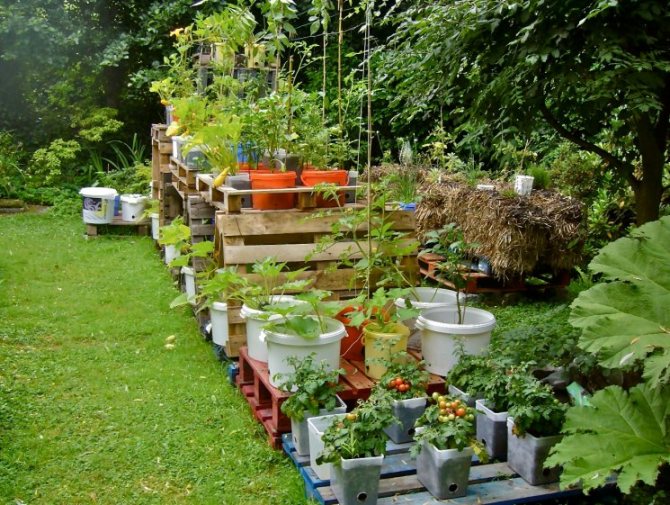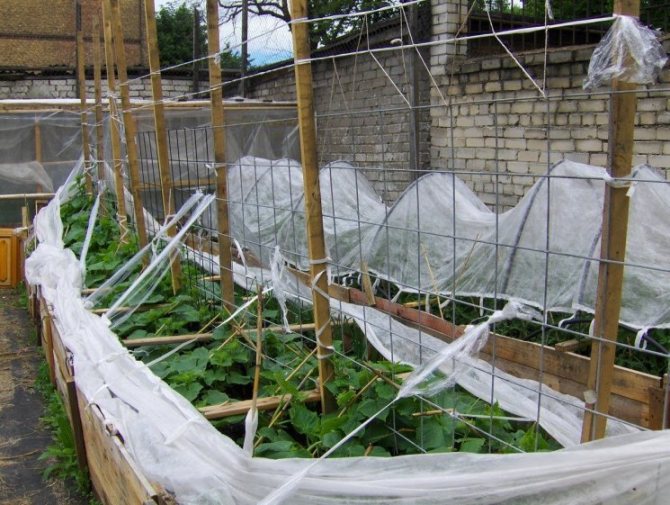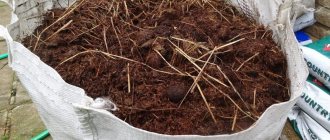Many people spend most of their lives in their dachas. The summer resident cares for and cherishes his brainchild, using various devices for the dacha and the garden in the arrangement.
The result of human labor is beautiful beds in the garden, giving a good harvest.
Summer residents dream that their work will always bring results in the form of a harvest. But the record harvest largely depends on how the beds were placed in the garden.
You need to clearly understand how to form them correctly, arrange them, how to arrange places for the beds in your garden, what size and shape they should be.
Layout
First you need to think over a plan of the garden, draw it (on paper or in a computer).

It is important to take into account the peculiarities of the location of the site: illumination, relief, type of soil, etc. This will affect the choice of the place for the beds and the place for planting plants.


For a vegetable garden on the site, a separate place can be allocated, for example, weave 2-3. Then it needs to be zoned and borders marked. In this case, it will be a little easier to care for the plantings, because they are all concentrated in one place.
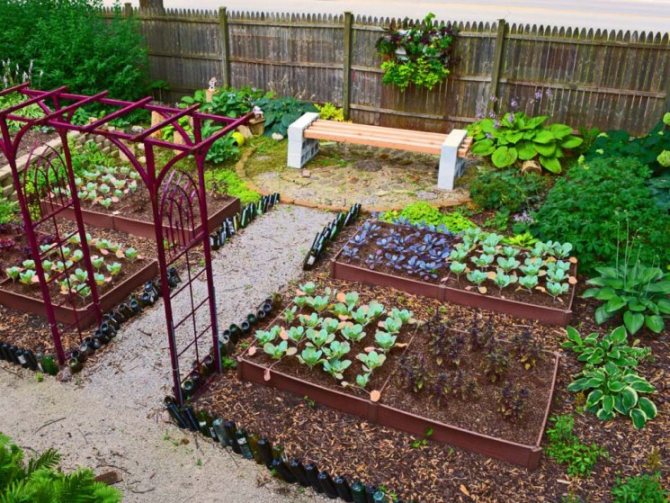

It is possible to distribute the beds throughout the site. Then the choice of conditions for growing plants will be greater: we plant sun-loving plants in a place with an optimal amount of sunlight, and shade-tolerant plants - in shaded areas.
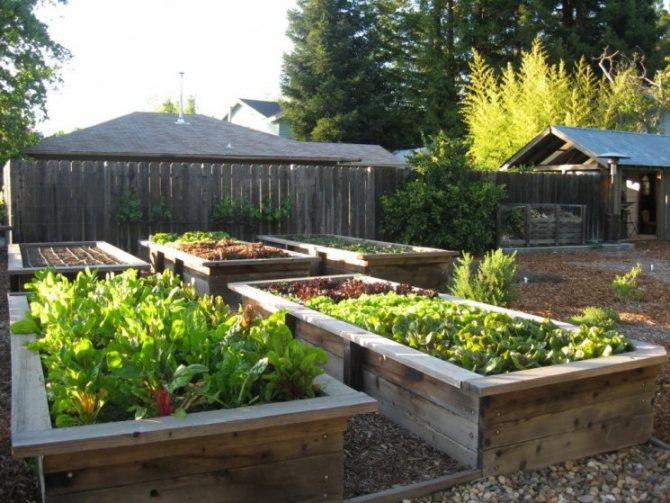

Decorative and classic types of beds
Today, in the conditions of home gardening the arrangement of several types of classic ridges is practiced:
- vertical structures allow to decorate unattractive walls or fences, minimize contact of plants with the ground, reduce the risk of fungal diseases and reduce the growth of weeds. The disadvantages include the limited volume of soil and the need to apply frequent fertilizing and irrigation measures. Among other things, such ridges are not suitable for growing perennial crops that can freeze out in winter;
- deep constructions have gained particular popularity in recent years. Such a ridge is a platform of standard dimensions, represented by soil dug twice with manure or good compost to a depth of a pair of shovel bayonets. Such a bed does not require digging for three to five years, and you can loosen, water, weed and lime the earth from the paths laid along it;
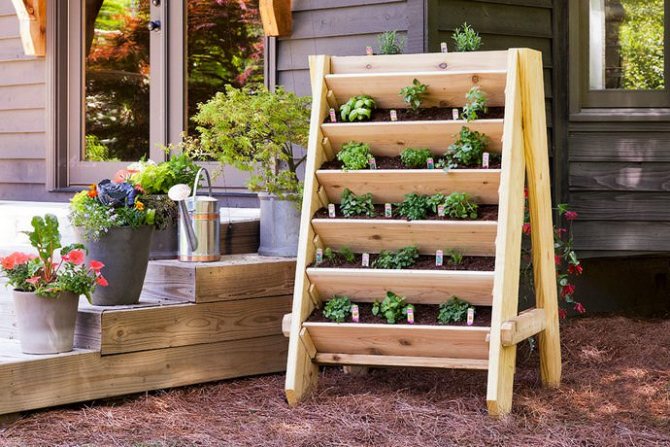

- tall structures convenient in terms of processing vegetable crops. When arranging, a trench is dug with a depth of 30-40 cm. In the dug trench, branches and paper, as well as plant waste, should be laid, after which layers of fertile soil are poured and lightly compacted. Edging of a high structure can be done with both wooden boards and slate or any other available material;
- warm constructions a bit like high ridges. A ridge is dug up a meter wide and of arbitrary length. A layer of fresh cow dung is laid on the dug-up surface, after which fertile soil is filled up. The surface should be spilled with plenty of warm water and covered with black polyethylene or non-woven fabric.Vegetables are planted in specially made slots.
The shape of the beds
In order to make a beautiful garden in the country, you do not need to make a lot of effort. It is enough just to play with the shape of the beds. Who said that they must be rectangular? It's boring!
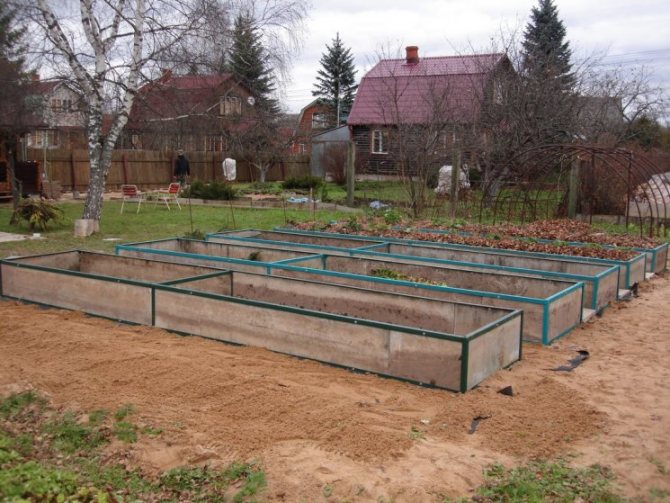

A whole composition can be made from the beds. For example, in the center, place the landings in the form of a circle or a regular polygon. And from them to send rays of elongated beds or, conversely, arrange the plantings in a spiral from the center.


If the beds are located in different parts of the garden, they can become a geometric accent in the arrangement of other design elements of the site, or they can duplicate their shape. So, for example, the garden bed can go along the recreation area or repeat the bends of the paths.
Important: taking care of the beauty of the garden, do not forget about convenience: all the beds should have access to care for them.
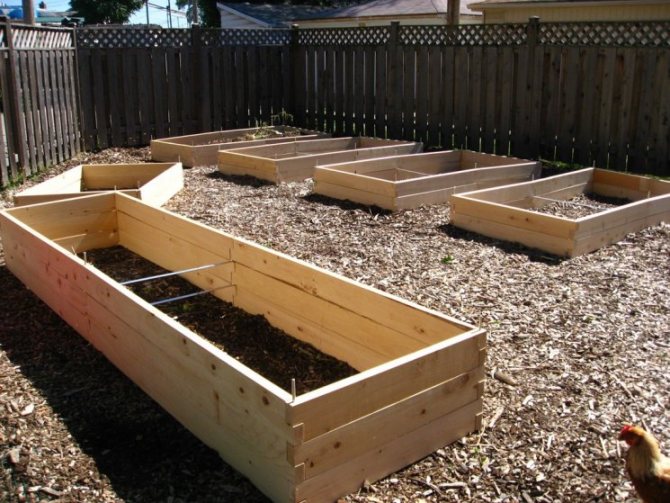

Requirements for vegetable beds
When planning vegetable beds, you need to remember that such structures must be sufficiently dry and even. Also, it is impossible to allocate areas shaded by trees or buildings for garden ridges. The correct bed should be well warmed up by the sun's rays. Experienced gardeners recommend breaking ridges in plots from north to south. A good result is provided by arranging the ridges with low sides, which prevent shedding and help to retain moisture during irrigation activities.
On flat sections of the ridge, it is recommended to break up and equip directly across the slope. If there are too large slopes, it is advisable to make special terraces, which are strengthened with wooden planks, logs or sheet slate. Such planting areas help protect the soil and cultivated plants from strong flood waters or heavy rains.


Currently, the most popular are the following options for the location of garden beds:
- the geometric arrangement of square, rectangular or elongated ridges in a parallel and perpendicular direction;
- radial arrangement in spacious areas with planting of garden crops in a kind of rays in a circle;
- angular non-standard arrangement;
- spiral arrangement or rockery ridges that can decorate any landscape and are optimal for the cultivation of garden strawberries or other low-growing berries.


The shape of the vegetable beds can be completely different. Experienced gardeners prefer to break the backyard or summer cottage into fairly even, rectangular or square ridges. To give the garden an original external, ridges of round, oval, triangular or any other shape can be performed. In any case, when planning the location of the ridges, it is necessary to be guided not only by desires and personal preferences, but also to take into account the features of the relief.
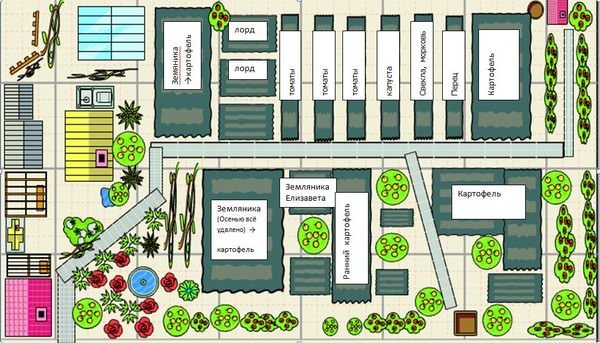

Fencing
The beds can be decorated with borders or fences.
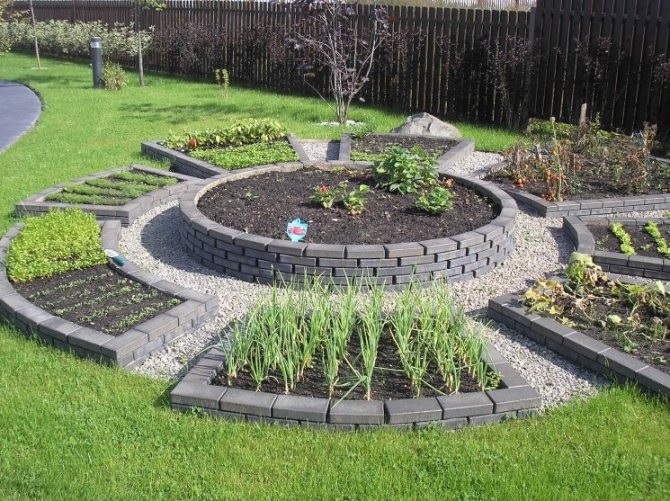

Because the beds always rise above ground level, then when watering or after rains, water will flow onto the paths and erode the edges of the beds.
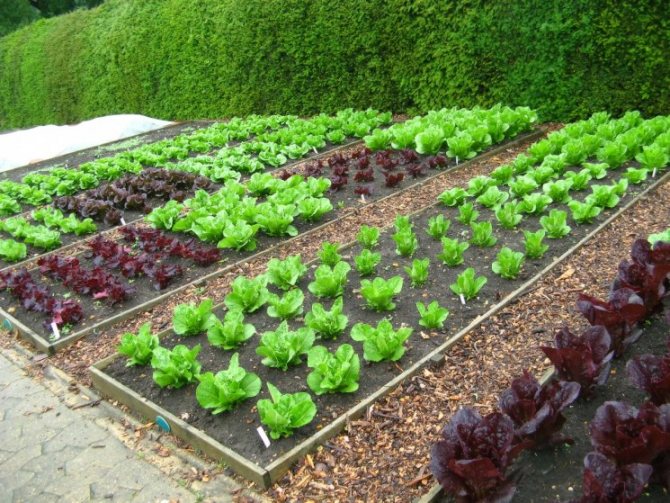

Curbs can help solve this problem. Especially if they are made of stone or brick with the use of cement. Such a border will not only decorate the garden bed, but also hold its edges. The paths between these landings will always be clean.
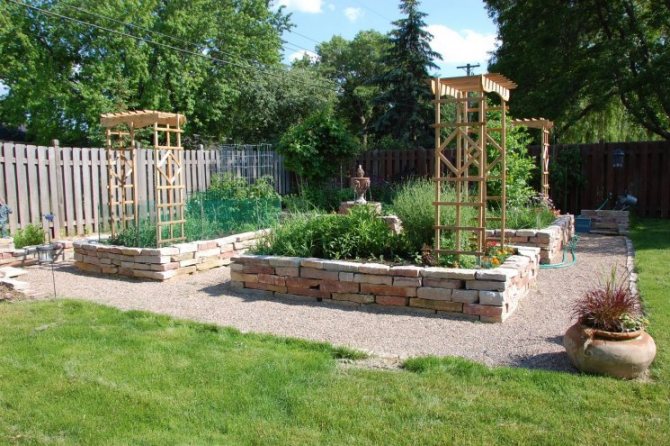

Fences are more decorative than practical. Fences in the form of wattle fence are very beautiful. You can make a miniature wooden fence.
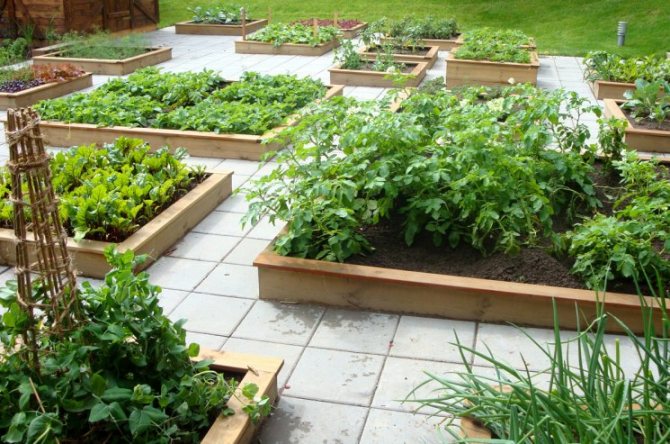

Or you can buy ready-made plastic plates at a gardening store and build a frame for the garden out of them. In this case, you can experiment with its color and shape.
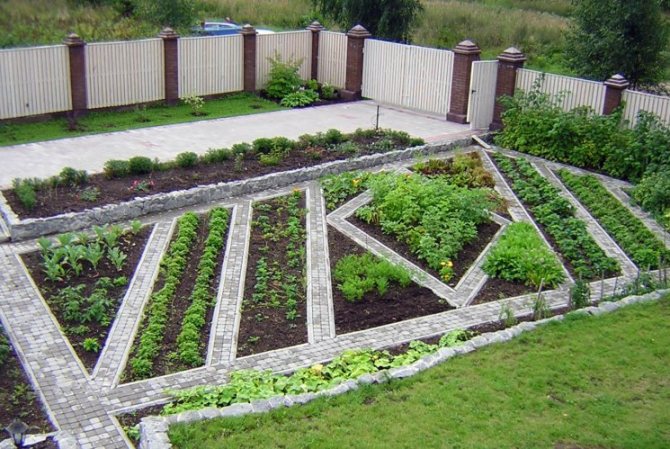

Processing one square foot of garden plot
Mel Bartholomew, author of the popular bestselling book This Extraordinary Square, believes that small vegetable gardens have many advantages. He was able to calculate that if he grew seedlings in an ordinary way, and did not enclose them in wooden frames, then he would need 5 times more area in order to get the same amount of production.


He believes that the by reducing the area under seedlings, about 80 percent of irrigation water is saved, as well as 80 percent of labor costs and 80 percent of fertilizers.
In order to make the small garden area convenient and comfortable to maintain, he divided each 4 x 4 feet (1.2 x 1.2 m) garden bed into 15 1 x 1 foot (30 x 30 cm) squares. Based on your desire, you can plant different seedlings on absolutely every square foot. For example, plant one culture of bush tomatoes, or 4 heads of cabbage lettuce, or you can plant 9 bush bean seedlings, or 16 radish seedlings.
Combination of plants
Many vegetables and herbaceous plants, in addition to their excellent taste, are highly decorative. Great compositions can be built from them.


Only lettuce leaves alone can make a bright and textured sketch. It will differ in color (from all shades of green to red and even brown) and volume (a combination of simple and double leaves).
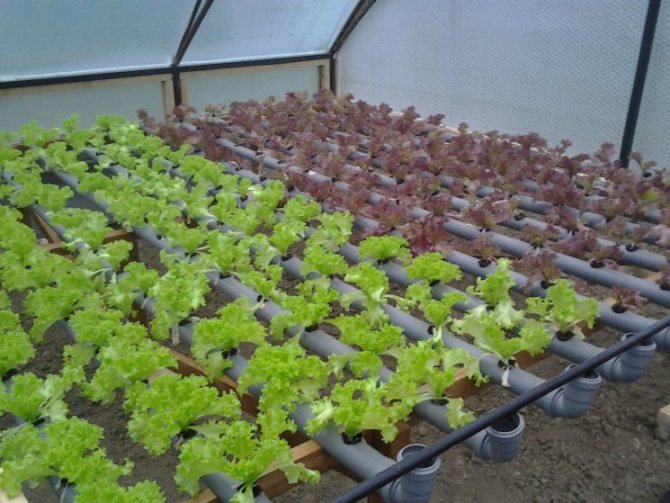

You can make a real mixborder from vegetables and herbs. In this case, plants are selected according to size, color of leaves, shape. The plan of such a bed is thought out in advance, because it should be not only "edible", but also decorative.
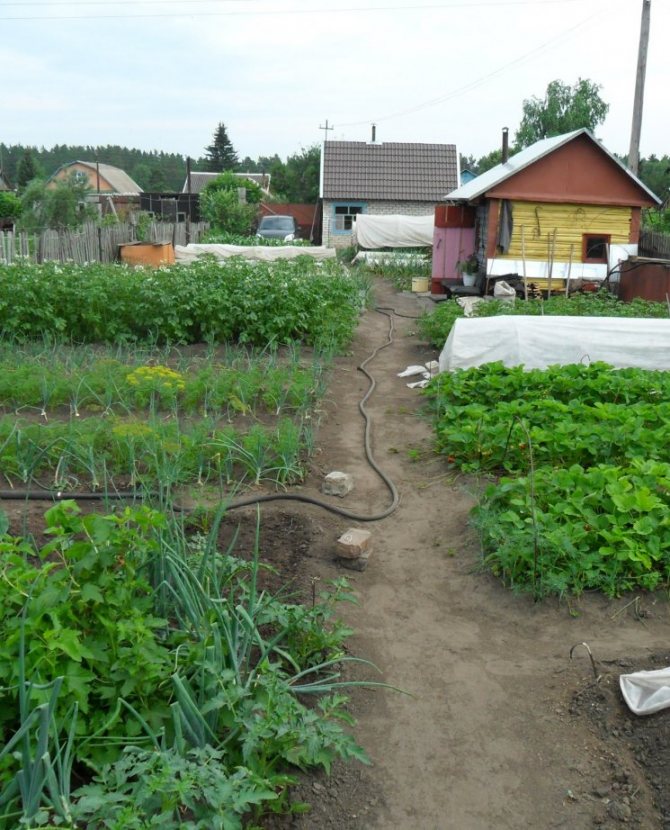

Why not pair vegetables with flowers? The landing will be as attractive as possible.


Important: in pursuit of beauty, do not forget about the rules of plant compatibility and crop rotation.
Application of mixed plantings of compatible plants
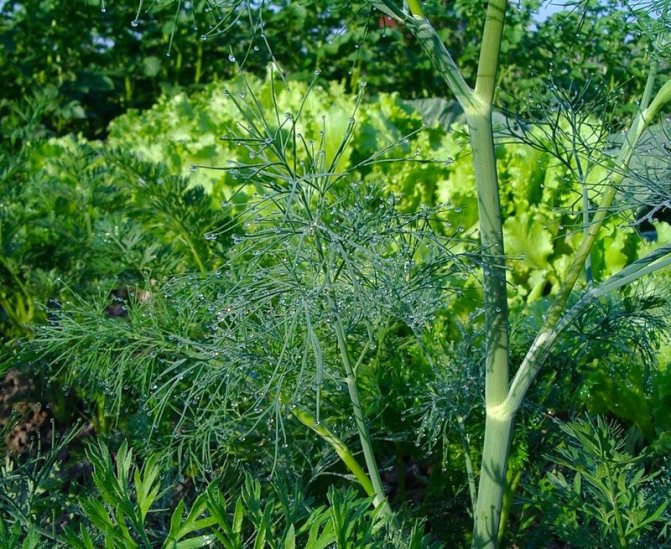

To save space, you can plant other compatible crops between the seedlings of one crop. Classic examples of such co-cultivation are beans, pumpkin, corn. Corn has a strong stalk that can support beans, and pumpkin, as it grows below, forms a shade that manages to inhibit the development of weeds that can compete with such crops. Growing a plan like this gives excellent results, but only if the plants are compatible.
Barbara Feldt's small ridge (1.3 square meters) in a collective garden near New York itself grows all the following crops: cucumbers, multi-flowered beans, radishes, tomato bushes (2) and bush beans.
Tracks
An important element of any garden is paths. Through them, you can easily get into any area of the site, without trampling the lawns and beds.
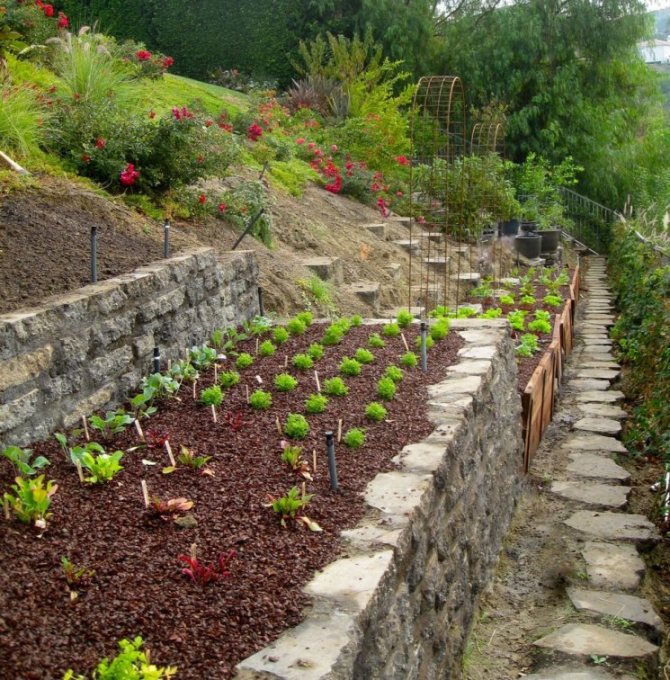

Between the landings themselves, the paths should be not only beautiful, but also comfortable. Gone are the days when the furrows between the beds were simply trampled down. And, except in rubber boots, it was impossible to walk on them.
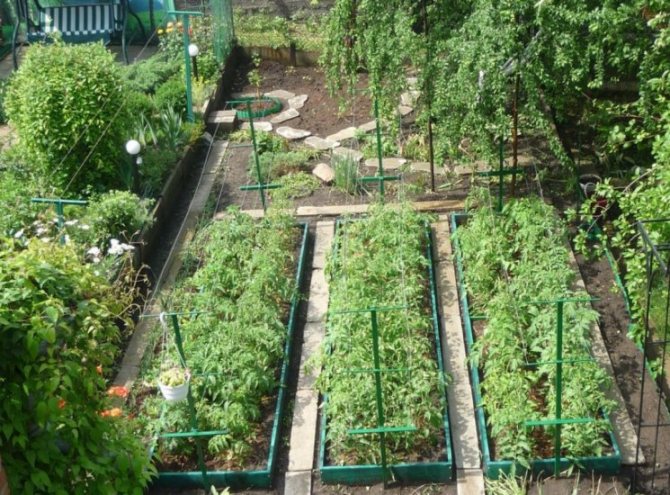

Today, the paths between the beds are laid out with stone and brick, filled with concrete, covered with gravel and pebbles.
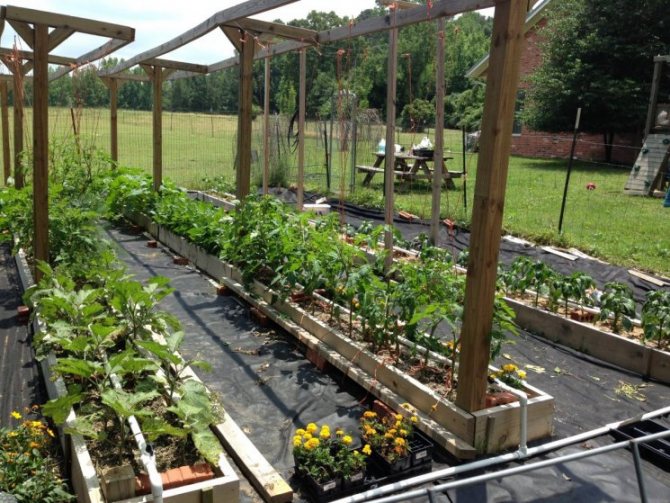

This not only ennobles the appearance of the garden, but also has practical significance: cleanliness reigns on the site. You can safely walk in the garden even in sandals.
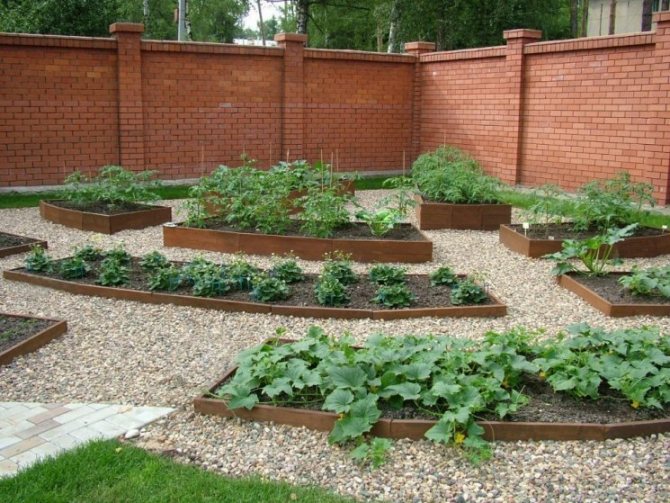

Just do not forget to make holes for draining water on the paths, otherwise after the rains the water will stand between the beds for a long time.
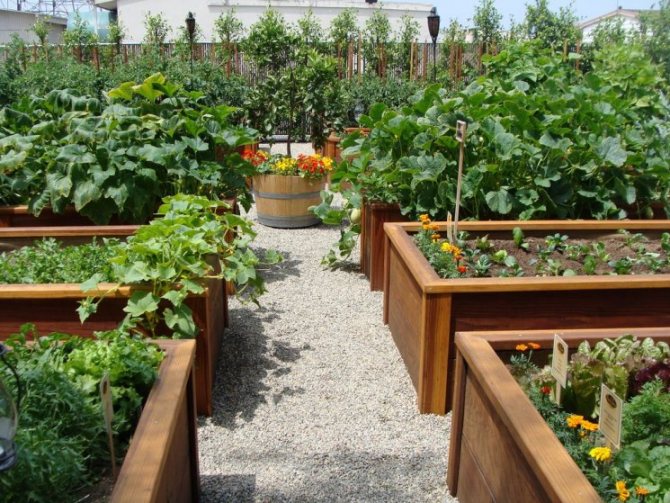

We make beautiful garden beds: advice from experienced summer residents
You have to make beds in the garden, but you still do not know how to arrange everything so that it is convenient. For convenience, wide aisles between the beds are suitable. Sometimes you will need to walk around the garden with a cart, and the beds should not be an obstacle in your path. Think it over in advance.
You also need to think about in which part of the garden there will be a compost heap, into which waste from the garden will be deposited. In the future, you can use the rotten material as fertilizer for the beds.
Where the beds will be located in the next season, you should think about in the current one. Digging up old beds is carried out in autumn, when the entire crop is harvested.
You will be interested: Do-it-yourself drip irrigation in the greenhouse
So, creating a garden bed, you need to know:
- what shape it will be;
- its dimensions;
- location.
Watering
Watering the garden is mandatory and regular. Without this procedure, your garden will not become lush and fruitful.


Someone is used to watering in the old-fashioned way from a watering can. And someone has already equipped their site with an irrigation system.
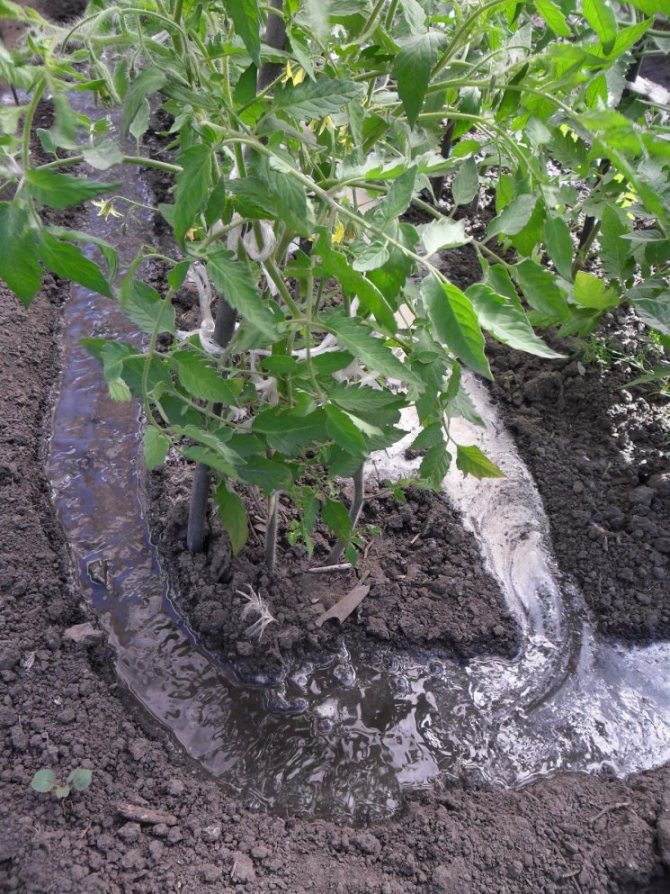

Most often, in the conditions of a summer cottage, manual irrigation is used using a pump and hoses. This, of course, is easier than carrying water in buckets, but it still takes a lot of time.
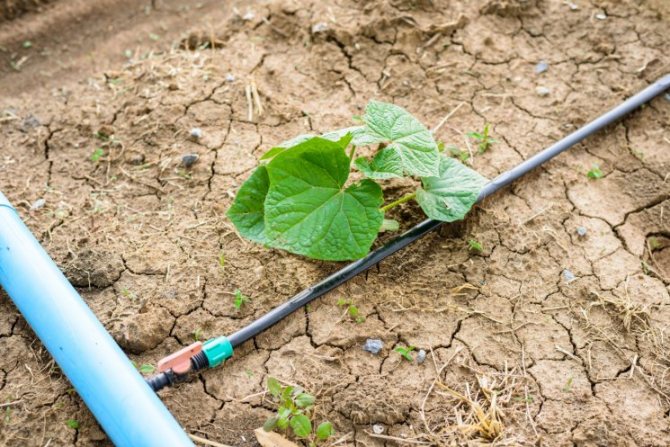

If you want the area to water “by itself,” install an automatic irrigation system. It is thought out even at the design stage of the site, tk. pipes are laid underground.


Such irrigation can be drip or subsurface. The advantages of automatic watering are obvious: you have additional free time while the garden is taking water procedures.
Layout of a vegetable garden near a private house
In the presence of free 15 acres, the planning of the garden and the site will not be difficult. Here you can use interesting solutions, mix shrubs, fruit trees with flowers and vegetables. Garden trees are usually located in a recreation area, there is also a gazebo, benches, and a children's area. A prerequisite is to think over an irrigation system, since manually watering crops over a large area will be a rather problematic solution that takes a lot of time and effort.
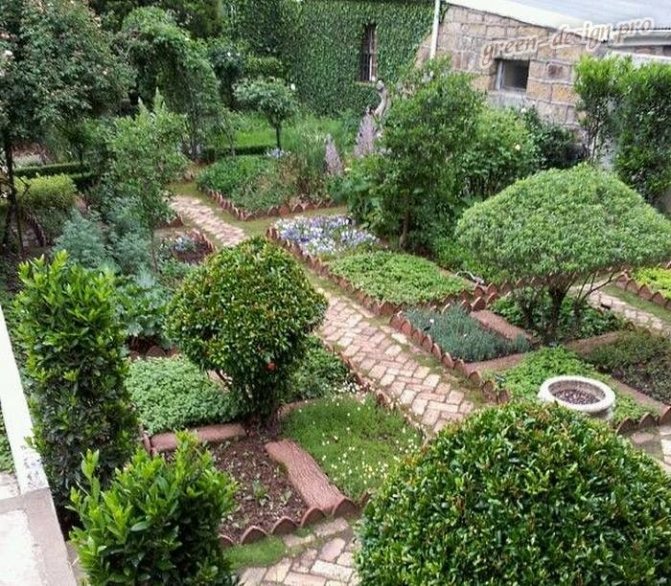

The unifying element on the site, which will harmoniously combine the vegetable garden, and the garden, and the house, is the paths. It is best to choose natural material for creating paths, which is present in landscape design. Give up strict lines, it is better to choose organic rounded solutions.
Additional care
Top dressing, like watering, is an integral part of gardening. Especially if the soil on the site is poor. The type of fertilizer and its amount are calculated individually for each type of plant, taking into account the type of soil.
Weeding is a headache for all gardeners. Especially in the first half of summer, when the weeds are actively growing. To reduce their growth, it is recommended to mulch the ground around the plantings.
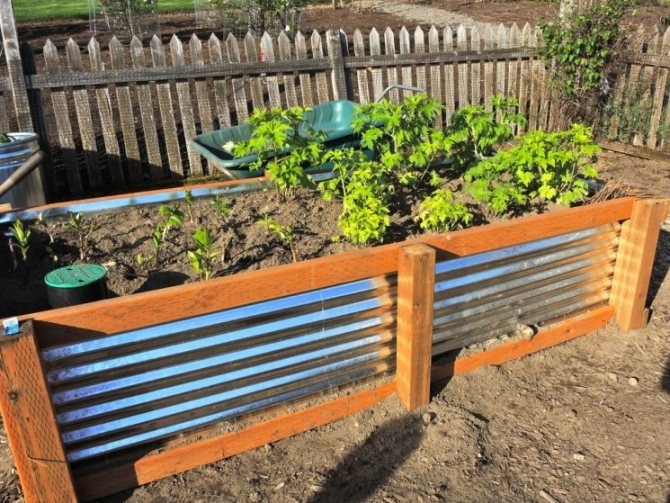

Growing plants on supports and trellises
Even with a fairly small area, it is still possible to increase the productivity of the garden plot by growing seedlings on trellises. For example, plants that grow widely (cucumbers, peas, melons, pumpkins, tomatoes) can be grown vertically using trellises, supports and trellises.
Also, vertical cultivation reduces the time spent on caring for crops and harvesting. On such plants, which grow vertically, it is better to see ripe fruits. And besides, due to the fact that they are slightly raised above the soil, they are less likely to be affected by fungal diseases, because the air spreads between the leaves quite freely.
For example, Mel Bartholomew's whip culture grows on a trellis, which he places on one side of a 4 x 4 foot (1.2 x 1.2 m) bed. His trellis is 2 strong posts, which are driven into the ground at the ends of the ridge, and between them there is still a stretched nylon mesh. Scourge seedlings (not fruits!) Must be tied to supports.
Small plot
If you have a small garden plot or are simply not ready to break a large vegetable garden at your dacha, you can make a mini-garden or even a flower garden.
Usually, in this case, greens are planted on such a bed, which is intended for use in the summer. It is convenient to place such plantings next to the kitchen or barbecue area. In this case, fresh herbs and herbs will always be at hand.
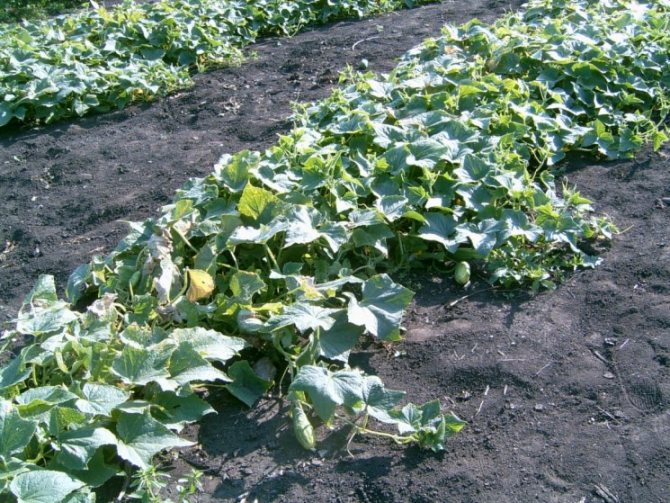

Plants can be planted in containers. This is very convenient because pots with very small or, conversely, already grown specimens can be removed to the background.


And at the moment of their maximum growth and decorativeness, put containers closer to the kitchen.
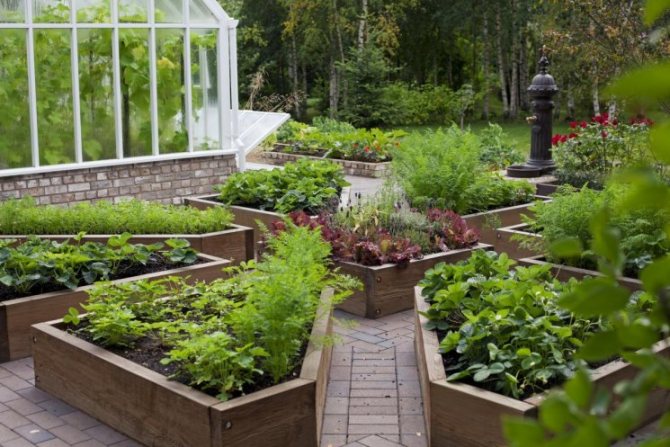

Vertical planting will also help to save space in the summer cottage. Pots of lettuce, dill, basil and other herbs are mounted on a vertical support.
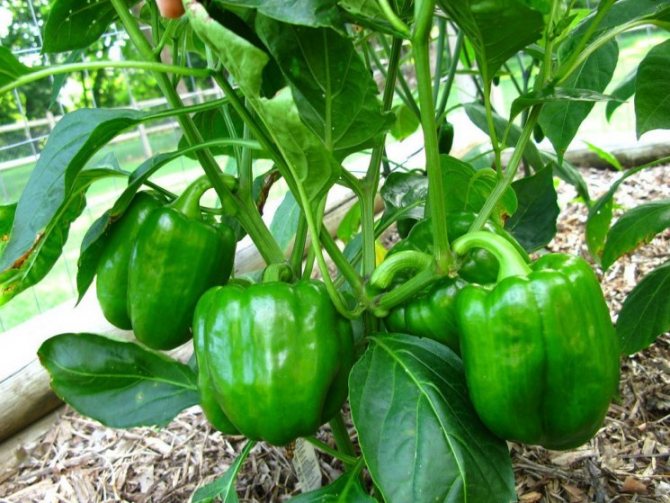

Important: Plants in containers and pots require more frequent watering. the earthen lump in the pot dries quickly. And don't forget the drainage!
Crop rotation in the garden: how to plant vegetables correctly
One of the simplest and most popular solutions for the implementation of crop rotation in the conditions of home gardening, is based on the division of vegetable garden crops into several main groups:
- leafy group - cabbage, lettuce, green onions, sorrel and spinach;
- the fruit group is represented by tomatoes, cucumbers, peppers, zucchini, squash, eggplant and pumpkin;
- a group of root vegetables, represented by radishes, beets, carrots, radishes, turnips, potatoes, Jerusalem artichoke;
- a group of legumes, represented by beans, beans, lentils, chickpeas, peas.
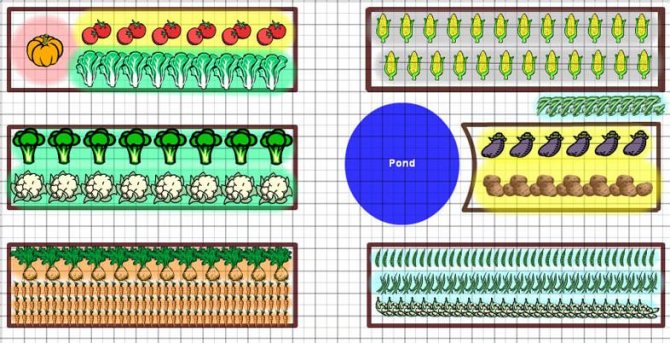

The correct alternation of such plants in the backyard and garden plot should be carried out as follows:
- in the first year, fruits are grown in the first bed, in the second - root crops, in the third - legumes, in the fourth - leafy;
- in the second year, fruits are transferred to the fourth bed, root crops - to the first, legumes - to the second, leafy - to the third;
- in the third year, the root crops are transferred to the fourth bed and so on.
No less popular is the crop rotation depending on the indicators of the exactingness of garden plants to soil fertility:
- high levels of exactingness are typical for aster, pumpkin and cabbage;
- the average degree of exactingness is typical for nightshades;
- insignificant exactingness is typical for amaranth, amaryllis and umbrella;
- legumes are capable of enriching the soil composition.
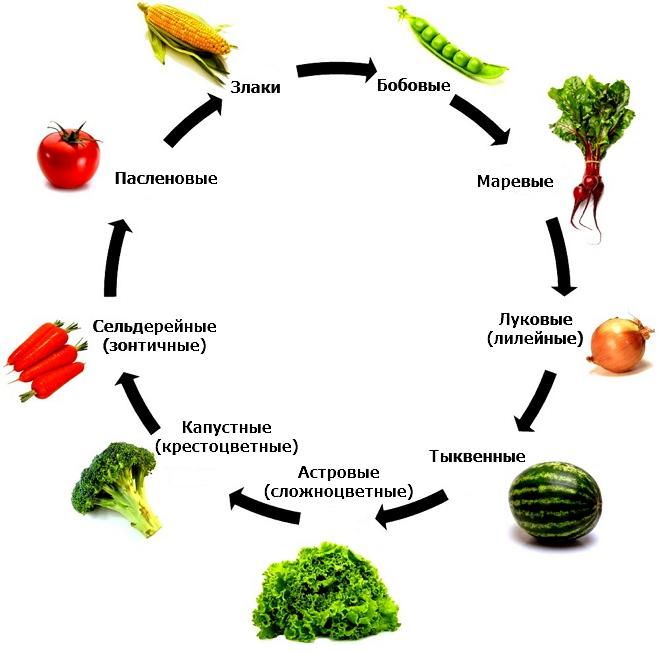

Solanaceous crops are represented by potatoes, tomatoes, eggplants and bell peppers. The umbrella or celery category includes dill, carrots, and parsley. The most popular amaranths are beets and spinach.... The pumpkin family is represented by cucumbers, zucchini, squash, pumpkin, watermelon and melon.
Popular kale or cruciferous plants are all types of cabbage, radishes, and watercress. Soil-enriching legumes are peas and beans, and sunflower belongs to the Aster family.
Interesting ideas
And a few more tips for decorating a garden in the country.
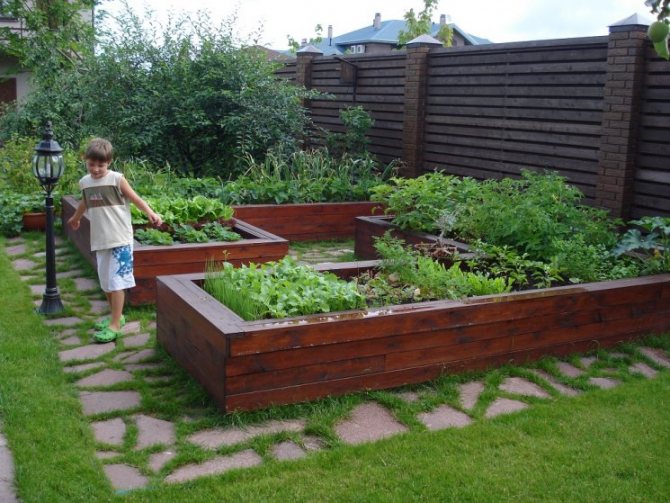

You can add a cheerful mood to boring plantings using landscape design elements. For example, by placing funny figures in the garden. These can be gnomes, figurines of animals and fairy-tale characters.


You can buy them, or you can make them yourself. For example, put an inverted old basin on top of a stump, paint it red, and apply white dots on top. Amanita is ready!
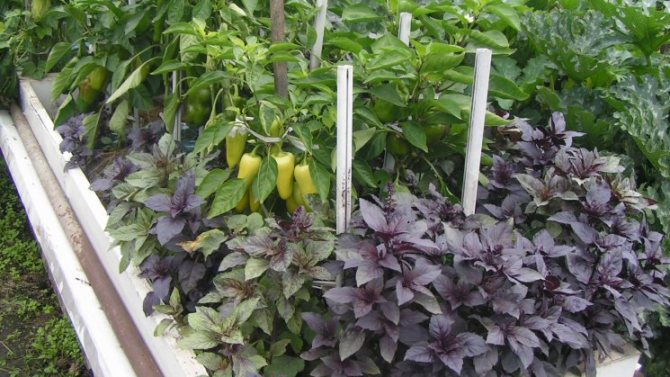

Designer beds can be created by using old unnecessary things as a container for planting. For example, a garden wheelbarrow or a leaky trough can be the basis for a garden bed or strawberries.
Small vegetables and herbs can also be planted on an alpine slide, they look very organic there.
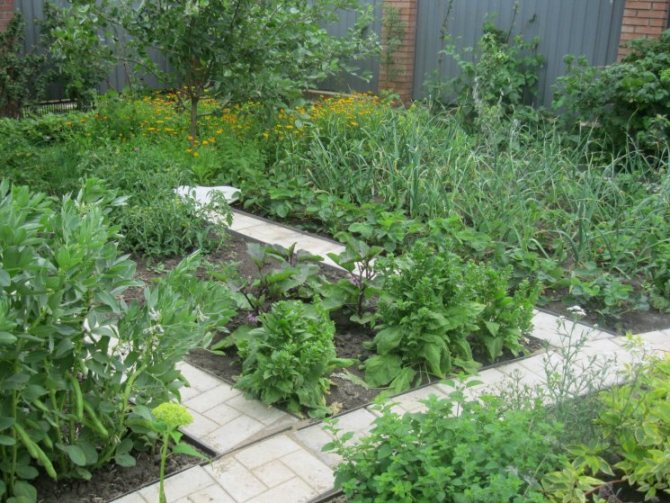

Have you tried hanging gardens? The bags filled with the nutrient mixture are suspended above the ground. And plant seeds are planted in the slot. Original solution.


There are incredibly many ideas for a summer residence and a vegetable garden, you just need to decide on the choice in accordance with your taste. And ... boldly forward. Enjoy your worries and a huge harvest!
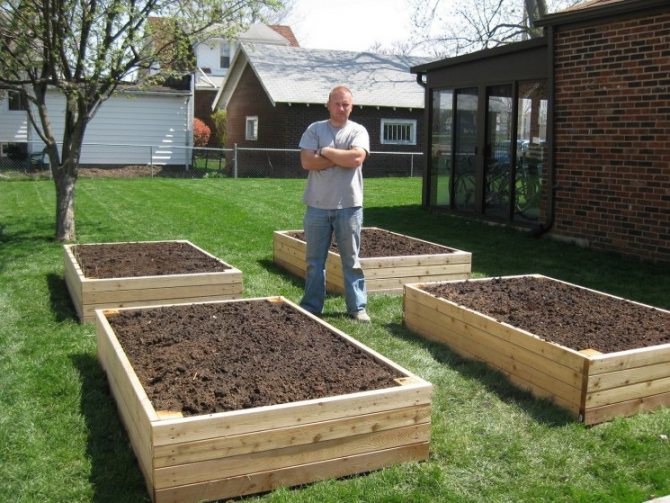

Improving the land in the garden


The most important factor on which a good harvest depends is the soil. If you know anything about organic farming, then you should be aware that organic material can bring significant value to soil health. Fertile soil needs to be created in the garden. It is the deepest layer of loose soil, which is rich in organic material, that can create good conditions for the cultivation and growth of the root system, and then the already branched roots will be able to gain access to abundant, useful substances and water. The result of all this is an intensive and rapid development, growth of the above-ground part of vegetation.
Photo of the garden at their summer cottage
Please repost
0
1
Alternation of culture on the ridge throughout the season
To successfully grow several harvest crops in one season, you need to alternate several crops in one specific area (planting a second seedling after removing the first). Most gardeners on one plot can grow 4 crops per season. You need to start with the salad, because this is a cool season culture. When hot weather conditions set in, lettuce crops become bitter, and if they are not still used, then they must be removed completely from the garden, and early maturing corn must be planted in the free space. And after it is ripe and removed, you need to take the vacant space with some other green crops or winter garlic. Garden plots should not be empty.
Barbara Feldt, for example, as soon as her corn ripens, harvests, composts the beds that are free after that, and re-plants some other crops.


It is worth noting that plants that have grown from seedlings ripen faster than those planted directly in the soil. Therefore, we want to give you good advice - first, it is better to grow seedlings, if possible.
To speed up the change of plants in the garden, it is imperative to choose varieties that are already early ripening. McGrego believes that crops planted in the soil are large enough and therefore create a shadow on the ridges of the garden, while suppressing the development of weeds. He does weeding only once, namely after planting seedlings in the soil.
Well-known experts suggest that usually after each plant change, compost should be added to the free space in such a way as 2/3 of a bucket per 1 sq. M. It is poured into the soil to a depth of several centimeters, and a small layer of compost on top of the soil protects the plants from diseases.
How to prepare the land for narrow ridges?
To begin with, dig well the soil to a depth of 25 to 30 cm. Carefully remove the roots of perennial weeds. If the area is covered with turf, remove a few top centimeters and compost them. This fertilizer contains a huge amount of nutrients to increase soil fertility. Start digging the ground along the cord stretched along the border of the bed. Work with the shovel so that you get a neat and well-defined line. Thus, dig the entire border of the bed. Be sure to pay attention to the density of the earth at the depth of the shovel bayonet. If there is a lot of clay, you will have to dig to a depth of two or three shovel bayonets.
After digging, level the ground with a rake. If the site has a slight slope, place the beds across the slope. In this case, the finished ridge and the passages along it should be at the same level. To separate them from each other, make earthen bumpers along the side and end sides of the ridge. They create a favorable microclimate for germination and do not allow water to drain into the aisles.
How to make bumpers? Use a rake to rake the soil from the sides of the bed to its middle.You will end up with a long earthen mound that runs along it. Divide it in half lengthwise and shovel the soil to one side and the other of the ridge. Control the height of the piles with a taut cord tied to the pegs. If the sides are low, build them up to a height of 8-10 cm using the soil from the aisles. Check: the distance between the sides (bed width) should be 35-45 cm. Carefully level the ground remaining in the middle of the bed.
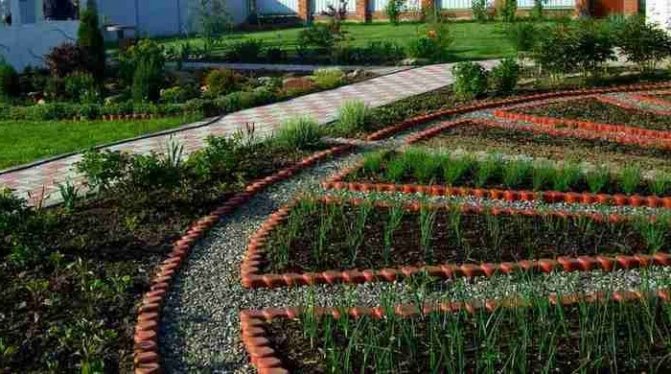

The bed surface should be flat. Choose a straight piece of wood or batten 2-3 meters long and secure the building level securely to the center of the piece. The permissible height difference in length should be no more than 3 cm for a 9-meter ridge. After checking, the cords can be removed. The garden is ready!
Secret # 10: start the season early and finish later
Adding a few weeks to the start and end of the season creates time for additional harvest. You can grow a late tomato or lettuce at the end of the season. To take advantage of these weeks, you need to prepare. Shelters or greenhouses can be used to heat the air or soil. In this way, growth can be maintained even in cold weather.
“In the spring, I use portable individual plastic shelters for planted cucumbers and pumpkins to accelerate their early growth,” said Paul Dosher. “In New Hampshire, this additional insulation allows the seedlings to be planted in the ground at the beginning of May, which is very important.” In addition, he uses a cool greenhouse for hardening seedlings and growing seedlings in December.
You can pre-heat the soil in the beds with a black mulch film with holes for the plants. It is better to do this one and a half to two months before the end of the frost. Above the beds is an arched greenhouse made of transparent perforated film, which is attached to the frame. This design allows the soil to warm up well, and when the soil temperature reaches 18 degrees, straw 2-3 cm thick is laid over the film, which protects the soil from overheating. With the onset of warm weather, you can remove the greenhouse, and put it back up only in the fall with the onset of cold weather.
Another structure consists of a metal mesh bent in the form of an acry, on the frame of which a transparent film is stretched. You can even fix the film with clothespins. “When the weather gets warm, I open up the gaps between the sheets to let the hot air out, and later I remove the film entirely, but leave the mesh in place as it protects the crops from birds and wildlife,” explains Mel Bartholomew.
Growing in high beds without the use of insulation allows you to extend the season even in those places where the soil heats up for a long time. This form warms up faster, drains better and allows you to start planting plants earlier.
